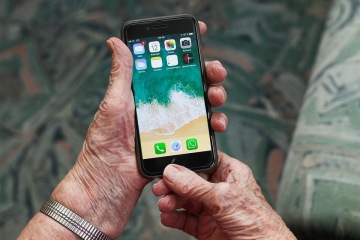How to help your elderly patients adapt to healthcare technology
March 19, 2019

Technology benefits are evident for all to see. Sadly, it sometimes seems seniors are being left out. This is not to say that old people are not interested in technology. They have just not been told how technology will be useful to them. The stereotype is that seniors and technology don’t mix, but it is essential to get them on board so that they can enjoy the benefits. Read on to see how overcome barriers to using technology with elderly patients.
Typical concerns
Provider barriers
The fear that introducing older patients to technology may cause more harm than good. For example may see a piece of tech as too difficult for the elderly patient to master.
Engaging the caregiver
A caregiver plays a vital role for the elderly patients. Therefore, we need to get caregivers on side.
Patient consent
Most elderly patients prefer home-based treatments. Thus, we need to win the hearts and minds of elderly patients.

Once we show our elderly how to use technology such as smart mobile devices they are free to enjoy all the benefits it offers.
Jane Byrne from FirstCare points out how technology can greatly improve seniors quality of life. “We’re regularly seeing new technology become available that can help elderly people to improve areas of their lives such as communication, organization, memory and general happiness.”
Engaging the elderly to embrace technology might sound like a difficult thing to do, but don’t
give up. All you need to do is adhere to the following principles to bring them on board.
4 useful tips to follow when introducing technology in senior care
1. Adapt communication to meet the patients' needs
Grouping people by their traits (for example their age, their social class, and so on) in health care helps the medical facilities to communicate more effectively with patients. Additionally, it is essential in identifying those seniors who are more likely to utilise health care technology, and will help you to communicate more effectively with patients.
For example, we could use an automated patient engagement platform for sending relevant communications for chronic disease, medication, wellness reminders and discharge management. This information can be sent via email, phones, or other methods, depending on the patient’s needs. For instance, to communicate with an elderly patient you could use a landline or email, as they may be unlikely to use other methods. This will help to get healthcare messages across more effectively.

Try to estimate your patients' skills and ability to learn something new. Then pick up those who are the most open minded and start introducing the technology to this group of elderly. Later you can make it work for the rest of your senior patients, too.
2. What will the impact be?
If you are determined to help older patients to adapt to healthcare technology, it is essential to reflect upon the impact. This can be done by analysing the benefits, which include: the economic gains, the time savings and the effect on wellbeing of staff and patients. Additionally, you need to ensure you get a return on your investment by vetting some of these technologies and any new solution for their cost and effectiveness.
3. Train the trainers
The effectiveness of technology for the health care provider can only be ensured by making sure staff know how to use it. Some providers don’t adequately train employees on how to spread knowledge of technology to elderly patients.
Therefore, it is crucial to train employees, and some health care providers have managed to achieve this by using elearning. You can also make partnerships with external organisations to offer senior care technology training. In this way, the technology can have a massive impact.
4. Ensure the tools offer value
The design of a health care tool for seniors should take into account the barriers that the elderly may face in using it, for example their levels of technological know how. Whether it is an app that monitors their health, or an online community, it needs to provide tangible benefits, and it should be easy to use.
Technology is ever changing, and it is sure to have a massive impact upon healthcare. Perhaps the real challenge for healthcare professionals is to convince elderly patients of the value of tech and the impact it can have. The tips above will help you with this.
This is a guest post by Holly Clark
